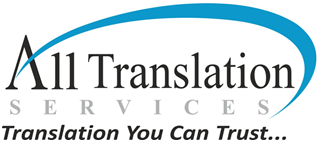Dubbing Services vs. Voice-Over Services
___Reaching a global audience often requires more than just translation; it requires localization through audio adaptation, typically via dubbing or voice-over services in Toronto.
While both strategies aim to make content accessible to non-native speakers, they cater to different needs and preferences, and choosing the right method is crucial for effective communication. This blog explores the distinctions between dubbing and voice-over services, helping content creators decide which method best fits their project’s needs.
Looking for a local voice over and dubbing service provider in Brampton, Toronto, Mississauga, Oakville, Kitchener, Ottawa, Vancouver or in Calgary? Our Toronto translation company will be happy to help you.
Understanding Dubbing Services
Dubbing involves replacing the original audio of a video with another language, spoken by voice actors. This method is preferred for its ability to provide a seamless viewing experience where the audience hears the characters speak in their own language. It requires precise synchronization of dialogue with the characters’ lip movements and facial expressions, which adds a layer of complexity to the production process.
Advantages of Dubbing:
Complete Immersion: Dubbing allows viewers to fully immerse themselves in the content without the distraction of reading subtitles.
Cultural Adaptation: It offers opportunities to adapt the content culturally, modifying dialogues subtly to better resonate with the target audience’s values and humor.
Accessibility: It is particularly beneficial for audiences that include children or individuals who are unable to read.
Challenges:
Cost: Dubbing is generally more expensive than voice-over because it requires casting multiple actors, directors, and more intensive post-production to achieve lip-sync.
Complexity: The need to match voice to lip movements can limit the translator’s ability to stay true to the original script’s length and style.
Understanding Voice-Over Services
Voice-over is a production technique where a voice—that is not part of the narrative—is used to speak over the original audio. Typically, the original audio is still audible beneath the voice-over, but at a lower volume. This method is often used for documentaries, news reports, and corporate training videos where the visual element does not rely heavily on character interaction.
Advantages of Voice-Over:
Cost-Effectiveness: Voice-over is less resource-intensive than dubbing, often requiring just one or two voice talents regardless of the number of speakers in the original audio.
Simplicity: It can be executed more quickly and does not require synchronization with lip movements, reducing production time and complexity.
Preservation of Original Tone: It allows the original audio’s tone and emotion to remain present, providing a layer of authenticity.
Challenges:
Potential Distraction: Having two audio tracks play simultaneously might be distracting for some viewers.
Limited Emotional Engagement: For entertainment content like movies or TV shows, voice-over might reduce the emotional impact since the original actor’s expressions and voice are somewhat obscured.
Choosing Between Dubbing and Voice-Over
The choice between dubbing and voice-over largely depends on the type of content and the target audience. Dubbing is generally preferred for commercial entertainment media such as films and television series, as it provides a more immersive experience. Voice-over, on the other hand, is suitable for educational or informational content where maintaining the authenticity of the original speaker is crucial.
For content creators, the decision should consider the audience’s cultural preferences and expectations, as well as budgetary constraints. For instance, dubbing is the norm in many European countries for films and TV shows, while voice-over is widely used in the Middle East and parts of Asia for informative content.
Our Professional Dubbing and Voice-Over Services
At our company, we understand the nuances involved in both dubbing and voice-over services. Whether you’re looking to fully localize your entertainment media with engaging dubbing or need a clear, concise voice-over for educational purposes, we offer both services in over 200 languages. Our team of linguistic experts and audio professionals are equipped to handle projects of any scale and complexity, ensuring your message resonates with audiences wherever they are.
By leveraging state-of-the-art technology and a deep understanding of cultural nuances, we tailor our services to meet the specific needs of your project, enhancing both its accessibility and appeal across global markets. Choose us to ensure your content not only reaches but also truly engages your international audience.
